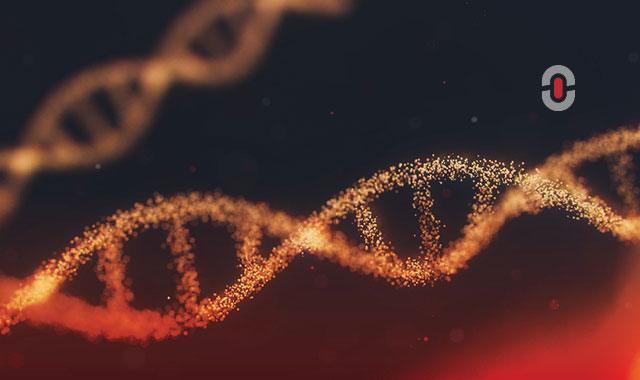Life sciences in Asia, which refer to all aspects related to medical procedures and human health, have seen impressive growth over the last few decades. In fact, some have even stated that the sector is expected to contribute to national security over the long term. There is a great investment by Asian governments in the life sciences industry, with aim of stimulating the growth of investment in the sector, employment, and its contribution to the national gross domestic product (GDP).
Despite overlaps and coordinated efforts by various actors in the life sciences industry, there are numerous challenges that arise. These include linguistic differences, culture, legal systems, tax regimes, levels of economic development, and available talent pools. To find out more about overcoming these challenges through accurate translation, take a look below.
The evolution of modern medicine into the current life sciences industry today
Modern medicine is said to have begun from around 1850 until 1950. This time period was characterized by little new product research that was based on relatively “primitive” methods. Medicine was also organized informally.
The second era of life sciences development took off from 1950 until the 1970s. This time period saw rapid rates of new product development, which was based on increasingly formalized in-house research and development (R&D) programs.
The third era after 1970 saw “drug development by design”. It made use of genetic engineering for the discovery and production of new drugs. It also saw greater consolidation among pharmaceutical businesses, growth of new biotech businesses, and more.
The most recent phase, post-1995, is generally more prevalent in North America and Europe. It is seeing great cross-pollination between health care and technological innovation. As such, we are seeing greater product development as well as the personalization of treatments.
Where are life sciences activities carried out?
In Asia, Special Economic Zones (SEZs) have been established and these remain both prevalent and relevant in life sciences. However, these SEZs may include:
- Industrial parks
- Special export processing zones
- Technology parks
- Innovation areas
Apart from these, and more specifically related to life sciences, we also see the development of science clusters, science parks, and science incubators. Each of these locations requires stringent compliance because ultimately, any action undertaken in the life sciences industry can be a matter of life and death.
Furthermore, these locations can be owned by a diverse range of actors ranging from fund managers, government agencies, hospitals, institutional investors, integrated developers/owners, listed and unlisted companies, local authorities, owner-occupiers, private investors, trusts, and universities.
The life sciences ecosystem
The life sciences ecosystem engages multiple actors simultaneously in order to produce medically optimal results for the Asian population. As such, there are several ways of looking at this ecosystem. In general, it can be divided into three types of helix:
- Tripe helix: innovation is considered to be an outcome of an interactive process that involves several stakeholders. These include industry, university/science, and government
- The quadruple helix: this approach brings in the public/civil society as a fourth stakeholder.
- The quintuple helix: this adds a fifth element to the helical system, which is the natural environment and sustainable development.
Considering these helical systems and growth drivers in Asia such as the demographics of an aging population, the rise in lifestyle disease, and the rising costs and investment in health care expenditure, we are seeing great demand and cross-pollination in the life sciences industry between multiple actors simultaneously. This is occurring as they attempt to improve the health care system in their countries and across borders, whilst working with sector trends that include rising urbanization, war on talent, technology, and the need and importance of sustainability.
Which life sciences are popular in Asia?

Some of the greater focus in life sciences in Asia include the following:
- Covid-19: which has been a catalyst for large-scale global investment in R&D and medical devices. This has resulted in further innovation and an accelerated pace of change;
- Life sciences real estate; and
- The evolution of life sciences from modern medicine through formalized R&D to the wide-ranging field of life sciences that we see today.
Other areas in life sciences in Asia that are gaining traction include but are not limited to anatomy, bioengineering, cell biology, genetics, medical devices, pharmacology, and veterinary medicine.
Which Asian countries are investing in such technologies?
It must be noted that it is not only Asian countries that are investing in life sciences technologies. The sector is also driven by life science companies. It should also be considered that areas within countries in the various types of locations (such as science parks or incubators) are also making headway. Countries that appear to be performing considerably well include Japan, South Korea, and China. Other countries include India, Singapore, Malaysia, and others.
Why is the life sciences field difficult to translate, especially for Asian languages?
The life sciences ecosystem and industry are complex to navigate, particularly with the range of actors involved in multiple decision-making processes. In addition to this, the challenges mentioned earlier such as linguistic differences, culture, legal systems, tax regimes, levels of economic development, and available talent pools are just some of the problems encountered in life sciences translation.
It was also mentioned that the life sciences industry is one in which inaccuracies of any sort can be a matter of life and death. And this is something that must be taken very seriously in any life sciences translation.
The Asian continent is highly diverse linguistically speaking and for life sciences translation, it’s crucial to choose the right partner for your translation needs. The medical and pharmaceutical industry is extremely complex to navigate and the right translation partner will have the right specialists, linguists, translators, and experts on hand to ensure that translations are accurate.
These specialists should follow ISO standards and comply with industry and government regulations, all while ensuring that cultural and linguistic nuances are taken into consideration when translating and localizing any life sciences content. It’s also crucial that each translation project goes through a thorough quality assurance process for optimal results.
Addressing the challenges of life sciences translation in Asian languages
The life sciences field is extremely tricky and complex to navigate. This is especially the case for foreign companies or actors seeking to enter the Asian market. As such, it’s critical to choose the right ISO-certified partner to ensure that there are no errors in your translation and localization project. With all the intricacies involved in translating to and from Asian languages, it’s worth considering the right translation partner for your needs.
